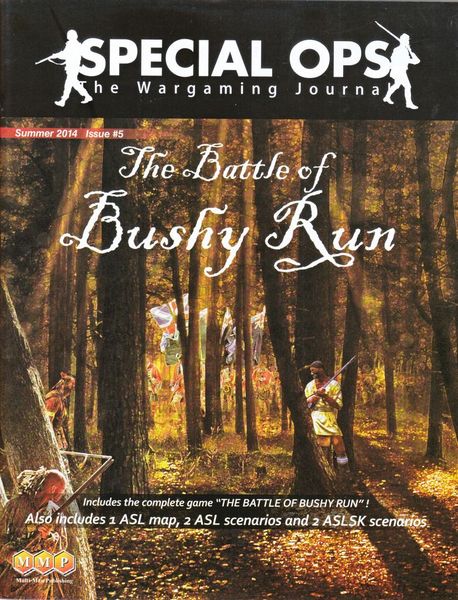The Battle of Bushy Run (2014) Board Game
The Battle of Bushy Run was a significant battle that took place on August 5-6, 1763 during Pontiac’s War, a conflict between Native American tribes and British forces in the Great Lakes region. The battle was fought near present-day Harrison City, Pennsylvania, and was a crucial victory for the British in their efforts to suppress the Native American uprising.
Game Components of The Battle of Bushy Run
How To Setup The Battle of Bushy Run
The game setup involves deploying the British column fully on the larger map, while the Indian forces are deployed on the smaller, hidden map. This setup reflects the historical context where the British were advancing through dense woods, unaware of the exact positions of the Indian forces. The Indian player can move units between the two maps, simulating the guerrilla tactics employed during the battle.
Gameplay Mechanics and Game Objective
Player Experience
Playing The Battle of Bushy Run is a tactical and historical thrill, especially for those interested in colonial American history. The game requires strategic planning, as the British must balance movement, engagement, and defensive positions against the Indian forces’ guerrilla tactics. The Indian player must utilize the hidden movement and dummy markers effectively to harass and disrupt the British column. The game is known for its intense and unpredictable nature, reflecting the challenges faced by both sides in the dense woods of Western Pennsylvania.
Pros
Cons
Personal Thoughts on The Battle of Bushy Run
This game is ideal for history buffs and wargame enthusiasts, particularly those interested in colonial American conflict. It offers a unique blend of tactical strategy and historical accuracy, making it a compelling addition to any wargame collection. However, it may not be as appealing to players seeking games with larger player counts or more straightforward, casual gameplay.
We are supported by our audience. When you purchase through links on our site, we may earn an affiliate commission, at no extra cost for you. Learn more.

